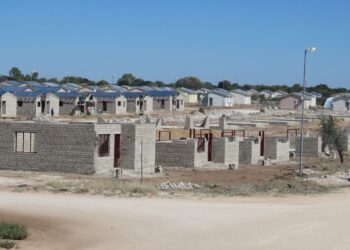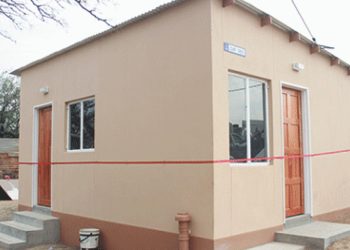
Windhoek recorded a 71% year-on-year (y/y) decline in the value of approved building plans in August 2023, latest data shows.
The significant dip is primarily attributed to the reduction in the value of plans approved in both Swakopmund which decreased by 92.8% y/y and Windhoek down by 61.7% y/y during the same period.
According to Simonis Storm Securities, the completion of projects witnessed an upswing in August 2023.
“This was primarily driven by a substantial increase in the value of projects completed in Windhoek, soaring by 191.4% y/y, while Swakopmund experienced a decline of 25.6% y/y in the same month,” Angelique Bock, the economic researcher at Simonis Storm.
She said Windhoek and Swakopmund registered a combined value of N$147.9 million for completed projects, marking an impressive 89.1% y/y increase in August 2023.
However, it’s worth noting that the number of projects completed in August declined by 18.8% y/y, a stark contrast to the 39.4% increase seen in the previous month.
Windhoek, accounting for 72% of projects completed, saw an 11.8% y/y decrease, while Swakopmund, representing 28% of projects completed, experienced a more substantial drop of 32.6% y/y in August 2023.
“Although the number of projects has decreased, this is a positive sign for the construction sector because it indicates that bigger projects have been completed, contrary to the prior trends of more additions and alterations completed, which are typically smaller, low-cost projects,” said Bock.
As a consequence of a weak pipeline and lacklustre results in August 2023, the construction sector remains a feeble contributor to GDP.
On a month-on-month comparison, the number of approvals dipped by 8%, resulting in a substantial 15.7% y/y decrease in August 2023.
“In 2023, on average, we are seeing the lowest number of plans approved since 2020. This indicates that the construction sector is contracting in both Windhoek and Swakopmund. Year-to-date, there has been a 20.6% reduction in approved projects compared to the same period last year and a 3.6% decline compared to 2020,” said Bock.
The total number of plans approved has consistently exceeded the six-month average since May 2023.
Credit for mortgages extended by businesses decreased by 5.1% y/y, while households saw a meagre 2.9% y/y increase in July 2023.
“Our assessment maintains that the contraction in the construction sector is primarily due to weak demand for new buildings, this is evidenced by businesses, since mid-2022, being net repayors of their mortgage loans, suggesting that new investments in buildings have been sluggish,” Bock said.Â
She added that the average mortgage loan sought by businesses in 2023 is 9.1 % points lower than in 2019 and 0.7 % points lower than in 2020.Â
Simonis Storm notes that the tight financial conditions facing both households and businesses, resulting from higher interest rates, are dampening demand for mortgage loans.Â
“Although households are still net borrowers of mortgage loans, their investments tend to lean towards smaller projects, such as renovations or additions to their residential properties,” Bock said.











